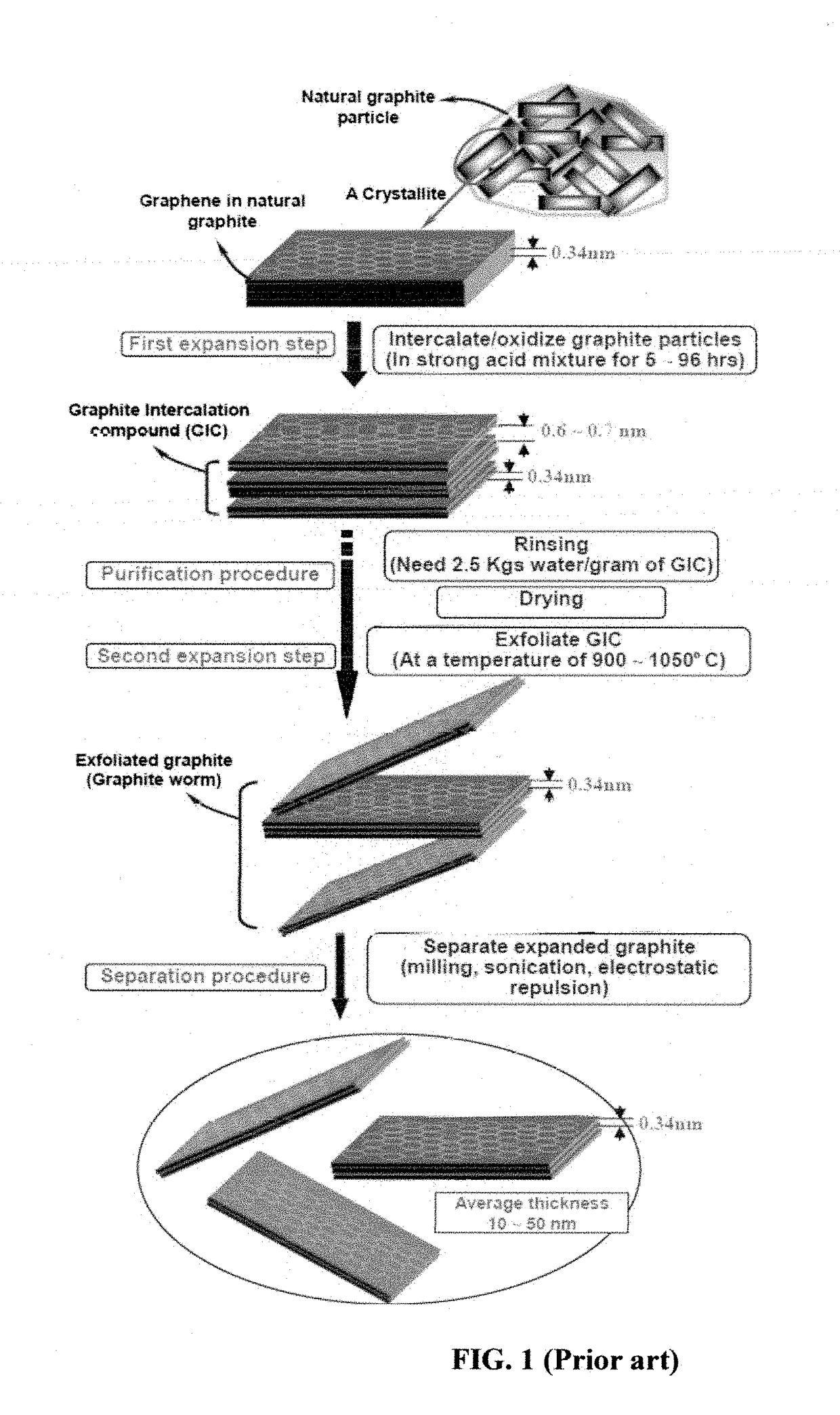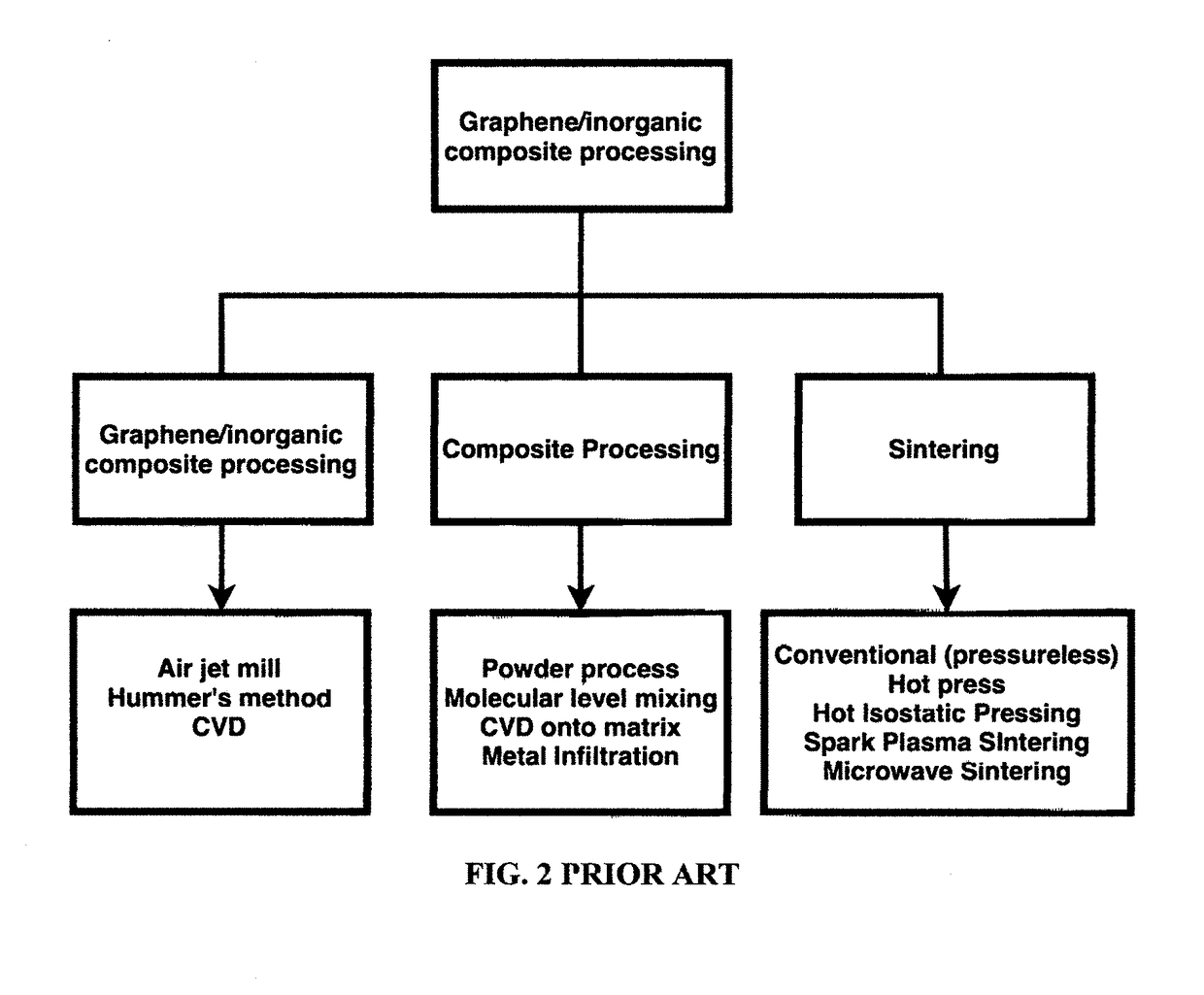Chemical-free production of graphene-reinforced inorganic matrix composites
a graphene-reinforced inorganic matrix, chemical-free technology, applied in the direction of additive manufacturing, process efficiency improvement, transportation and packaging, etc., can solve the problem of difficult to disperse more than 25% of graphene in an inorganic matrix using conventional methods, and achieve the effect of reducing cost, reducing process size, and optimizing material properties and throughpu
- Summary
- Abstract
- Description
- Claims
- Application Information
AI Technical Summary
Benefits of technology
Problems solved by technology
Method used
Image
Examples
example 1
Reinforced Copper Matrix Composite
[0137]In an experiment, 1 kg of copper powder, 100 grams of flake graphite, 50 mesh (average particle size 0.18 mm; Asbury Carbons, Asbury N.J.) and 110 grams of magnetic stainless steel pins (Raytech Industries, Middletown Conn.) were placed in a high-energy ball mill container. The ball mill was operated at 300 rpm for 4 hours. The container lid was removed and stainless steel pins were removed via magnetic separation. Particles of the inorganic carrier material were found to be coated with a dark layer, which was verified to be graphene by Raman spectroscopy. Carrier material was placed over a 50 mesh sieve and a small amount of unprocessed flake graphite was removed.
[0138]A 10 gram sample of the material was compacted into a disk by pressing and then sintered in a furnace with flowing argon at an appropriate temperature. An additional 10 gram sample was pressed and densified by hot isostatic pressing (HIP).
[0139]A 10 gram sample of the above mat...
example 2
lized Graphene Reinforced Copper-Matrix Inorganic Composite
[0140]The process of example 1 was replicated with the inclusion of 50 grams of urea as a nitrogen source. The coated powder created was formed into disks using the same processes as example 1.
example 3
Reinforced Tin Composite
[0141]In an experiment, 2 grams of 99.9% purity tin powder and 0.25 grams HOPG were placed in a resonant acoustic mill (Lab Ram, Resodyn Inc, Butte Mont.) along with stainless steel balls and processed for 5 minutes. Subsequently, the coated tin particles were compacted at room temperature, melted at 240° C., and solidified to form a graphene-reinforced tin matrix composite disk.
PUM
| Property | Measurement | Unit |
|---|---|---|
| thickness | aaaaa | aaaaa |
| thickness | aaaaa | aaaaa |
| temperature | aaaaa | aaaaa |
Abstract
Description
Claims
Application Information
 Login to View More
Login to View More - R&D
- Intellectual Property
- Life Sciences
- Materials
- Tech Scout
- Unparalleled Data Quality
- Higher Quality Content
- 60% Fewer Hallucinations
Browse by: Latest US Patents, China's latest patents, Technical Efficacy Thesaurus, Application Domain, Technology Topic, Popular Technical Reports.
© 2025 PatSnap. All rights reserved.Legal|Privacy policy|Modern Slavery Act Transparency Statement|Sitemap|About US| Contact US: help@patsnap.com



